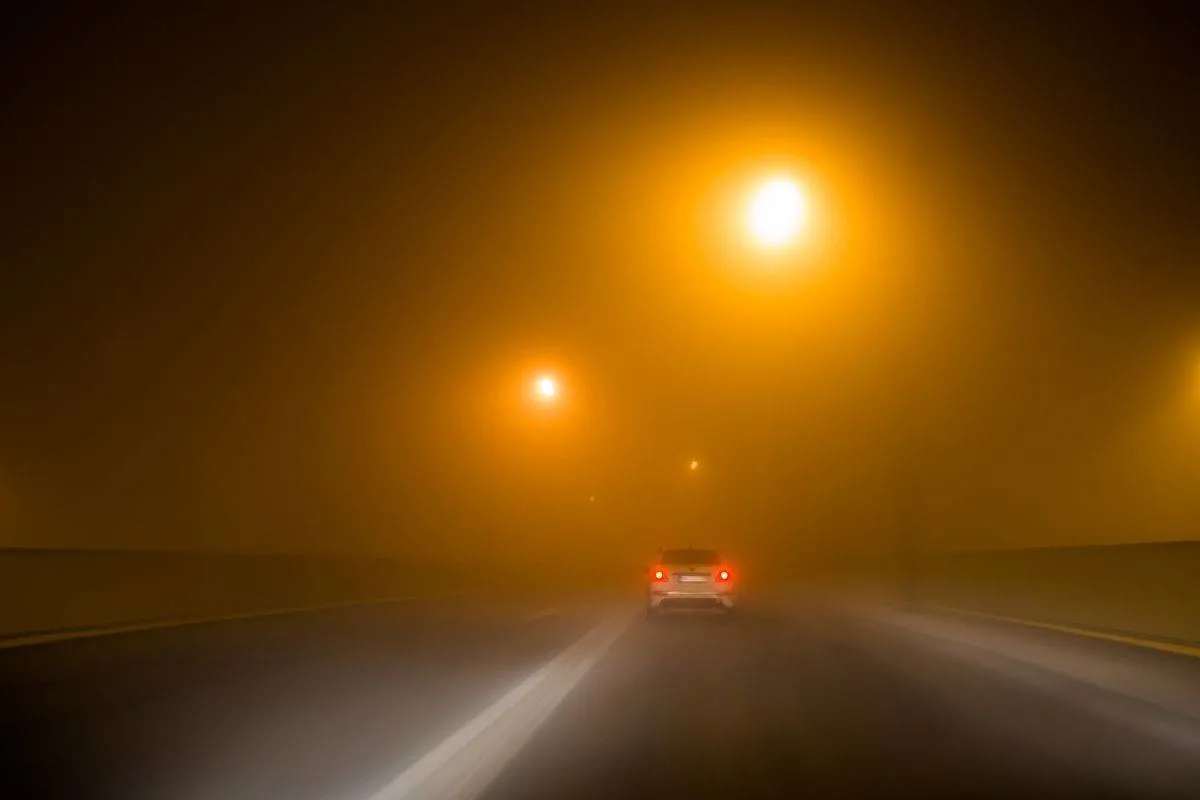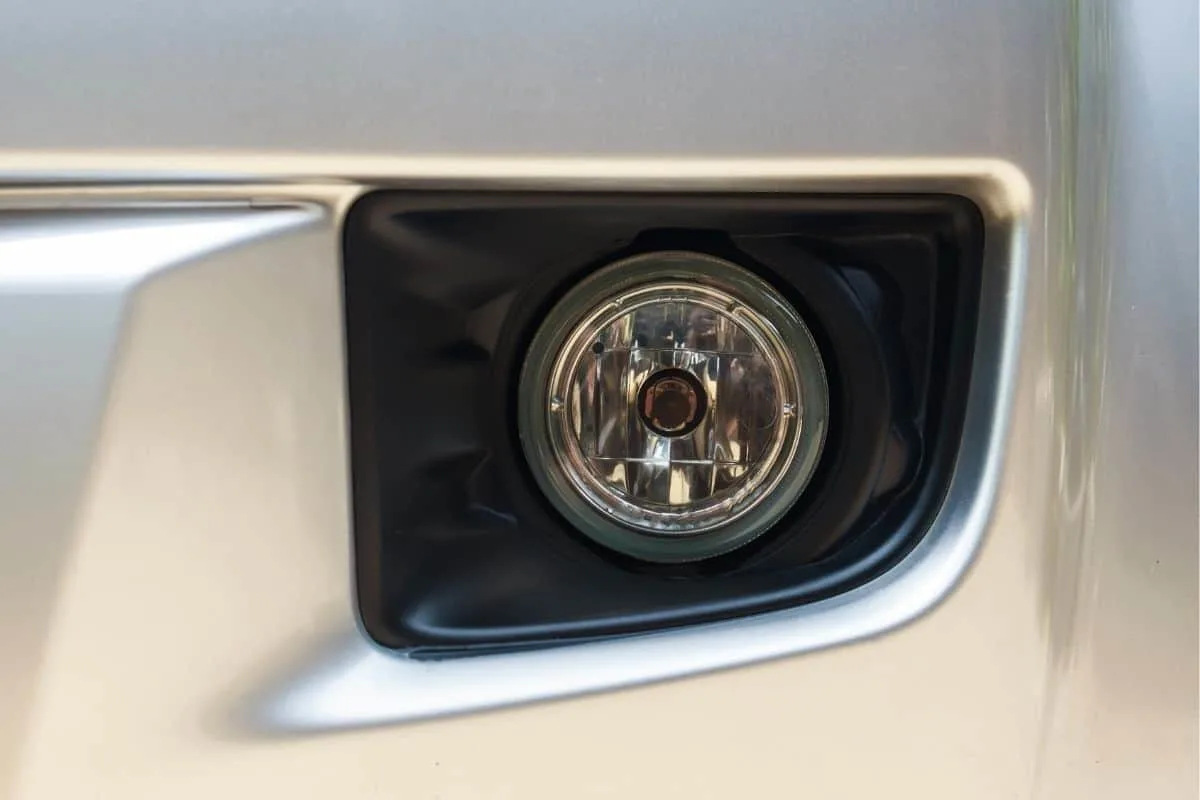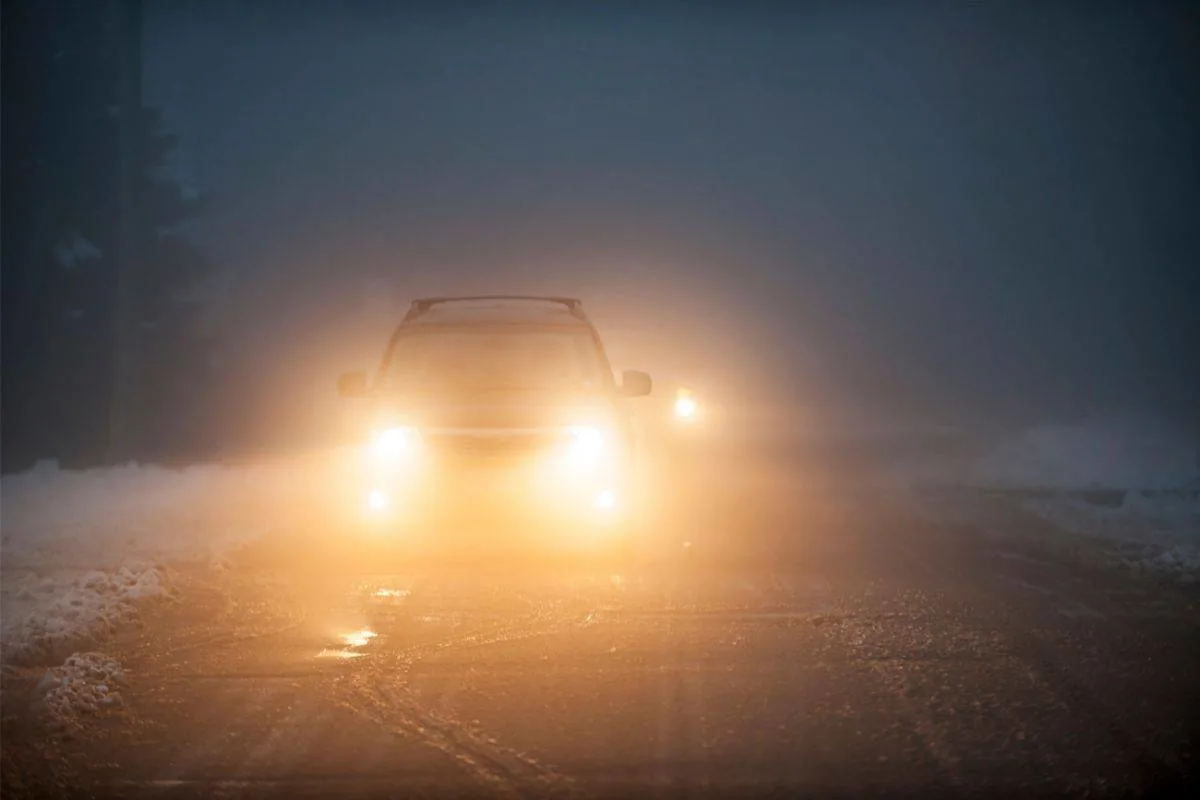In areas that experience poor weather conditions such as thick fog, poor visibility poses a major safety risk for us and other roads users. Anytime we are driving, it’s crucial to have the clearest line of view at all times.
Low beams are better to use in the fog because their downward projection angle and lower intensity result in less glare and reflected light from the water droplets suspended in the air. The higher pitch and intensity of high beams result in more reflected glare and reduced visibility.
Keep reading to learn more about driving in foggy conditions, how to use fog lights, and how different they are from low beams!
What Is the Difference Between Low Beams and High Beams?
Vehicles have headlights fitted on the hood or front bumper to enhance our vision.
These lights illuminate the road ahead and come in two modes; high beam and low beam.
High beams or full beams emit a bright, intense light that projects up to about 100-150 meters (approx. 350-500 feet) straight ahead. Their purpose is to shed as much light as possible, covering a longer distance.
Since the glare is blinding, we should only use high beams in poorly lit or rural areas. We should also be mindful of the presence of other drivers in either direction when using high beams.
The high beam mode is for use over short durations of time and only in very dark environments. Therefore, when the approaching vehicle is about 500 feet away, we should always switch over to using low beams.
Low or dipped beams produce less intense light that projects up to 40-60 meters (130- 200 feet) sideways or downwards. The glare is minimal since the light is not aimed at other drivers’ lines of vision.
They are perfect for use in normal weather conditions and on roads with considerable traffic. Low beams make it possible to see pedestrians, signboards, and other vehicles in front of us.

Are Low Beams Better in Fog?
When driving in foggy conditions, it’s best to use the low beam mode. The light projects downwards, illuminating the road in areas with poor visibility. Using low beams enhances safety during bad weather conditions.
The low beam mode is widely used as the primary light source. It lights up the road ahead better than the high beam mode in foggy conditions.
Other drivers can see us well, without the blinding effect caused by high beams.
Should You Use Low Beams in Fog and Snow?
Snow, fog, rain, and cloud cover reduces the amount of light passing through. The water particles diffuse the little light available, which can be dangerous to us, pedestrians, and other drivers on the road.
There is a law in several states stating that the headlights should remain on when there is low visibility. In some states, the headlights must be on any time that the wipers are operating.
When driving in the snow, it’s vital to ensure that all our lights, mirrors, and windows are not covered in snow. In foggy conditions, we must avoid using high beams as the light reflecting from the water droplets makes it more difficult to see.
Are Low Beams and Fog Lights the Same?
Low beams and fog lights are not the same. Some cars have no fog lights, as they are not mandatory. We can find fog lights on the lower front bumper as an independent unit separate from our car’s headlights.

By comparison, low beams and high beams are one unit positioned on the front bumper.
By design, fog lights should provide extra light in front of the vehicle without affecting the other drivers’ ability to see. When used correctly, they complement the regular headlights in poor weather conditions such as snow or fog.
The beam from fog lights has a unique shape that is wide and flat. It can penetrate the fog and illuminate the road surface, enabling drivers to stick to the appropriate lane.
Are Fog Lights Brighter than Headlights?
Technically, fog lights shouldn’t be brighter than headlights. This is to prevent causing a distraction or disorienting other drivers on the road.
Some cars have no fog lights by design, so car owners can have them added. They can also exchange the original lights with bright, white ones. The new fog lights tend to produce an intense, white light that goes in every direction.
This affects the ability of other drivers to see the road ahead clearly. In some areas, fog lights are not allowed in clear conditions or residential sites.
3 Additional Safety Tips When Driving in Fog
With reduced visibility, driving in fog can be dangerous. To ensure our safety, and that of other road users, it’s essential to:
#1 Reduce your speed
If you lack a clear line of sight, it’s best to slow down.
Thick fog minimizes the feeling of moving fast since we cannot see objects moving past us. It’s helpful to keep an eye on our speedometer to manage our speed.
The reduced line of sight also gives us less time to react to road conditions, making it even less safe.
#2 Make use of the right pavement line for guidance
When the fog is thick, it’s advisable to use the white line on our right side to stay in the appropriate lane.
Avoid using the pavement markings in the middle, as we could end up moving very close to approaching vehicles.
This helps to move you away from road barriers as well as oncoming traffic.
#3 Avoid stopping on the road
Even with minimal visibility, it’s okay to slow down without stopping entirely on the road. If necessary, pull over at a safe place far from the road, and switch off your lights.
If we leave our lights on, other drivers may assume that our taillights indicate the right path to follow. This could end up causing an accident.
